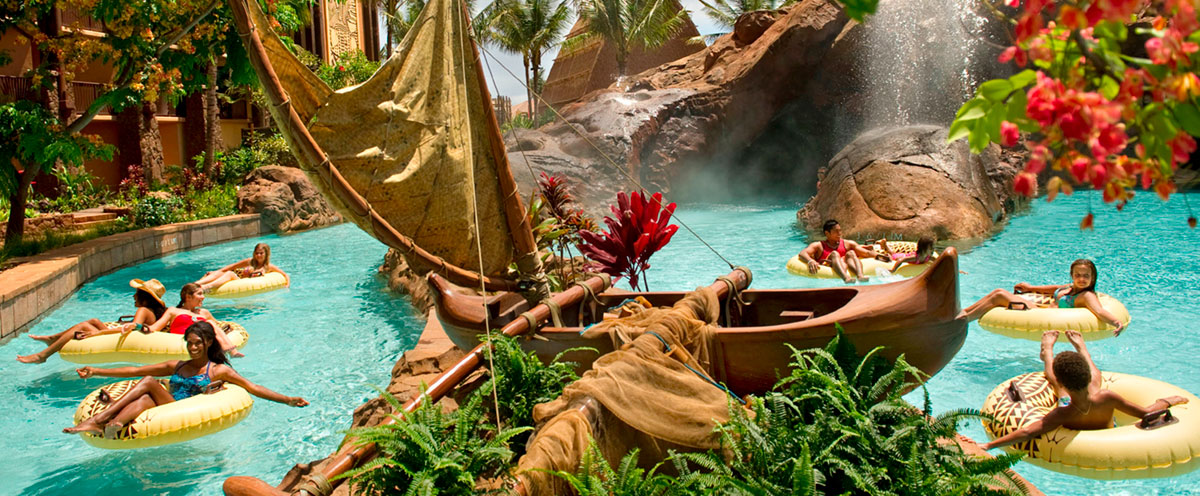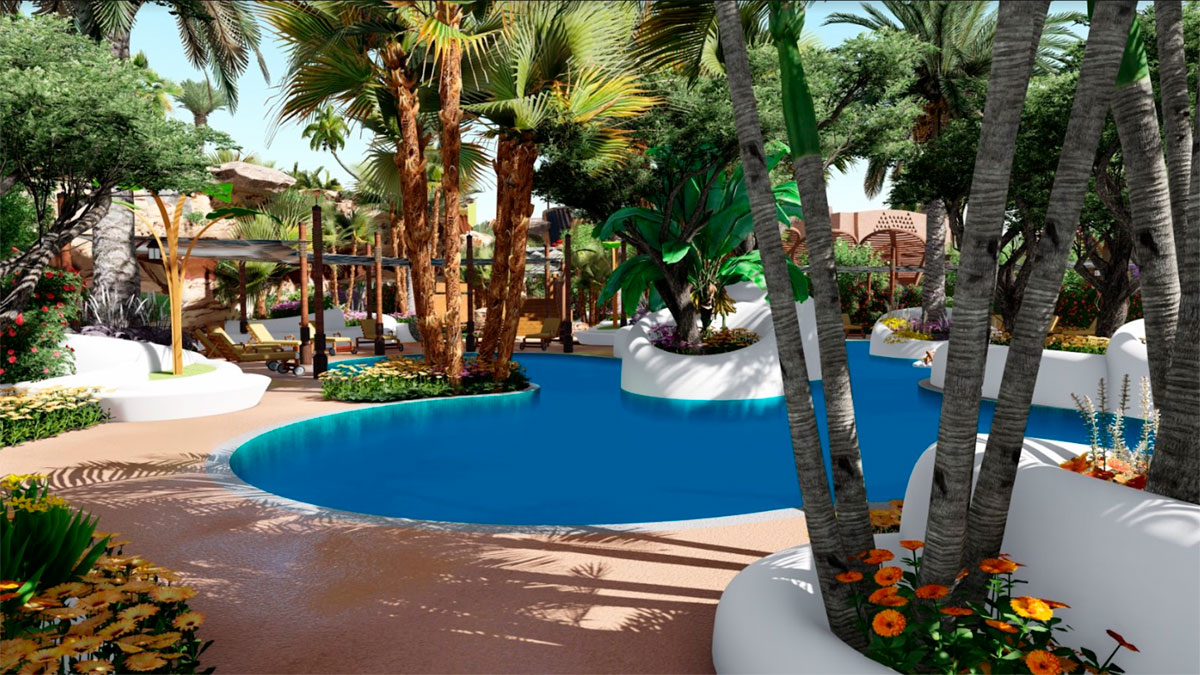The Lazy RIver is a classic waterpark attraction, which is also often integrated as a complementary element in hotels and resorts. In a channel designed to fit the available space, a large body of water advances at a constant speed. Its course unfolds in curves and capricious shapes, crossing rock galleries, waterfalls, or surprises such as jets or sprays. The riders gently travel along the watercourse, on floats or carried by the current as they float or walk in a closed route that takes them back to the same point from which they departed. During the journey they may encounter quieter areas and other more agitated areas, with different types of current or even waves.
Amusement Logic is a world leader in the installation of Lazy Rivers, not only because of its designs, but also because it has developed its own technology for their operation, using efficiency criteria and with the desire to establish profitable and environmentally sustainable businesses for its clients.
Indeed, traditional systems for pumping large flows of water (typically around 10,000 m3/h in Lazy Rivers) require large investments, both in terms of equipment and in the structures and hydraulic networks needed for their operation. At the same time, and due to their low performance, this equipment requires a lot of electrical energy. Aware of these weak points, the engineers of Amusement Logic’s R+D department have developed the Tigris, Nile and Volga impulsion systems for Lazy Rivers.
The impulsion stations of our Tigris, Nile and Volga devices are located, according to a force distribution system, at specific points along the course of the Lazy River. The turbines’ exact position and power is determined by the river’s width and geometry. In other words, each of these installations is configured in a particular and personalized way, like a suit, tailor-made for the specific Lazy River. This method is a primary efficiency factor of the system. The movement of water is also constant and homogeneous. On the other hand, the turbines’ engines and electrical parts never come into contact with the water, for greater user safety.
Finally, the turbines of our Tigris, Nile and Volga systems can be configured for continuous or timed operation. Likewise, they incorporate frequency variators to regulate their power, which allows them to optimize their electrical consumption. The structure also incorporates a GRP conduit to transfer the water flow from the impulsion station to the river channel. This conduit and the compact design of the turbines simplify the necessary civil work and as such affect their cost, whether they are to be installed in water parks, hotels or resorts.
In short, all of the aforementioned efficiency factors allow our Tigris, Nile and Volga systems to achieve significant power savings of up to 60% compared to conventional systems.










